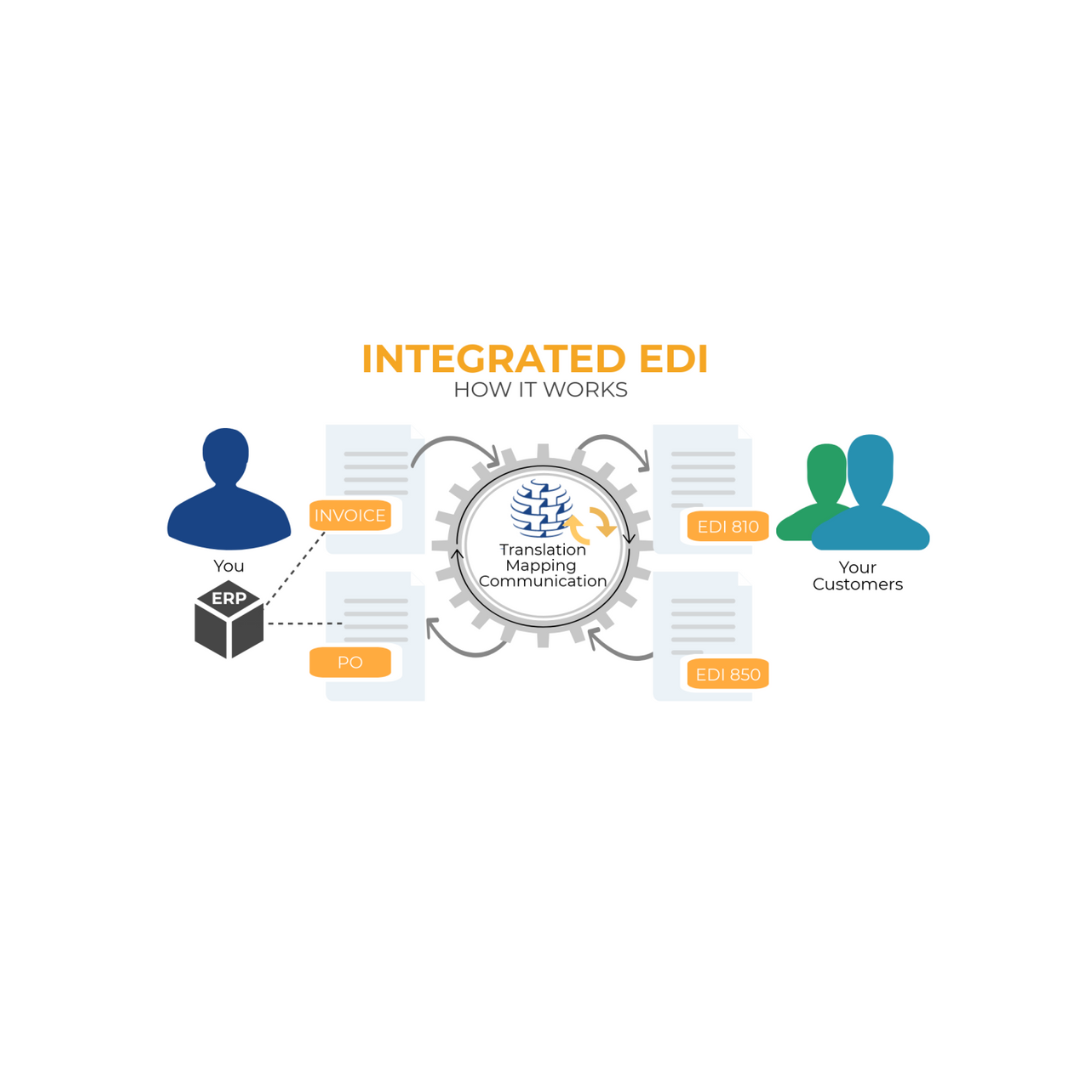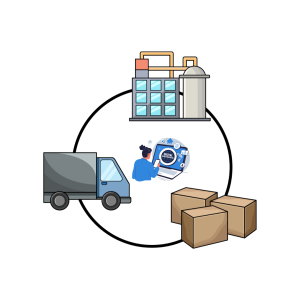Introduction
We’ve seen firsthand how businesses struggle when using isolated pieces of technology that require constant human intervention. Without a fully integrated EDI system, companies face significant challenges connecting different applications and systems. This inefficiency particularly affects industries ranging from automotive and retail to healthcare and construction, all of which have increasingly adopted integrated EDI solutions in recent years
Consequently, Commport’s integrated EDI solution offers a transformative approach. Our solution enables businesses to transmit purchase orders, invoices, shipping notices, and other transactional information electronically in a standardized format, eliminating the need for manual entry. Not only does this establish secure direct connections with trading partners, but it also creates integrated EDI workflows that automate data exchange processes, significantly reducing error risks.
In this blog, we’ll explore the top 10 features that make Commport’s Integrated EDI solution a game-changer for businesses looking to streamline operations and scale effectively.
- Standardized Document Formats
- Automated Data Exchange
- Real-Time Transaction Visibility
- ERP System Integration
- Error Reduction and Data Accuracy
- Cost Efficiency and Paperless Operations
- Scalability for Growing Businesses
- Compliance with Industry Standards
- Global Communication Capabilities
- Customizable and Flexible Workflows
Key Takeaways
- Automated workflows eliminate manual data entry, reducing transaction costs by 35% and processing errors by 30% through seamless computer-to-computer communication.
- Real-time visibility enables proactive decision-making, allowing businesses to detect and resolve issues before they impact customers or operations.
- Seamless ERP integration creates unified data flows, connecting internal operations with external trading partners without manual intervention or data silos.
- Cloud-based scalability supports business growth, accommodating increased transaction volumes and new trading partners without infrastructure constraints or performance degradation.
- Compliance automation prevents costly penalties, ensuring adherence to industry standards like ANSI X12 and EDIFACT while avoiding chargebacks from trading partners.
1. Standardized Document Formats
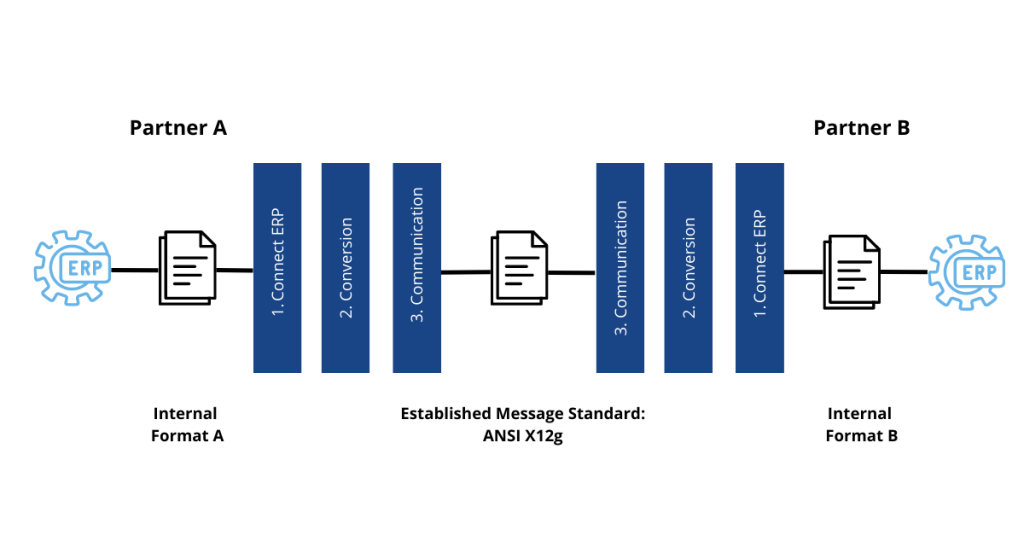
Electronic data interchange depends fundamentally on standardized formats that ensure consistent communication between different systems. At its core, EDI document standards are specific guidelines that govern the content and format of business documents, such as purchase orders, invoices, and shipping notices.
Standardized Document Formats Overview
EDI standards essentially function as a universal business language, enabling computer systems to interpret information correctly without human intervention. These standards fall into two primary categories:
- Proprietary standards – Developed for specific companies or industries, sometimes called non-public or private standards
- Public standards – Developed for use across multiple industries
The structure of these formats follows strict rules based on four key principles:
- Syntax – Rules determining what characters can be used and in their proper order
- Codes – Used to identify common information like currencies and country names
- Message designs – Defining how specific message types are structured
- Identification values – How values in an EDI file are identified
Most commonly used EDI standards include:
- ANSI ASC X12 – Used by over 300,000 companies worldwide across multiple sectors
- UN/EDIFACT – Widely implemented across Europe and globally for multi-country exchange
- TRADACOMS – Primarily used in UK retail sectors
- EANCOM – A subset of EDIFACT used in retail and other industries
- Industry-specific standards like HIPAA (healthcare), VDA (automotive), and SWIFT (financial)
How Commport Implements Standardized Document Formats
Commport’s integrated EDI solution understands that each trading partner may require specific EDI standards, protocols, and message formats. Their approach involves:
Standard Selection: Commport helps businesses identify which standards best fit their industry, ensuring smoother transactions with trading partners. For example, if automating procurement processes, they help determine whether ANSI X12 or UN/EDIFACT would be more appropriate based on trading partner requirements.
Document Mapping: Since no single standard covers every document type, Commport’s fully integrated EDI system provides translation capabilities between different formats. This allows businesses to communicate effectively regardless of which standards their partners use.
Version Management: EDI standards evolve to reflect changing business needs. Commport’s integrated EDI workflows manage these updates, ensuring compliance with the latest versions and releases.
Benefits of Standardized Document Formats
Implementing standardized document formats through an integrated EDI solution delivers several critical advantages:
Enhanced Accuracy: Standardization eliminates variability and potential errors associated with manual data entry. This standardization improves data consistency, leading to fewer errors and discrepancies in business transactions.
System Interoperability: By following established standards, documents can be processed correctly by any compatible system. Information appears in its expected place, making automated data exchange possible across different platforms.
Consistent Interpretation: EDI documents follow consistent data standards that ensure both sides interpret key details accurately every time, creating reliable, error-free document exchange.
Compliance Assurance: Many industries have regulatory requirements regarding document exchange. Using recognized standards helps maintain compliance with industry regulations and trading partner requirements.
Elimination of Paper Processes: Standardized formats replace printing, mailing, opening, interpreting, and retyping forms with a digitized process from start to finish.
Global Communication: Standards like UN/EDIFACT facilitate international trade by providing structured formats that work across borders and language barriers.
Furthermore, as businesses grow and evolve, these standardized formats provide a foundation for scaling operations without needing to redesign communication protocols with each new trading partner.
2. Automated Data Exchange
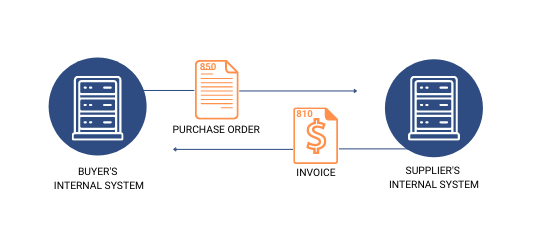
Traditional business document exchange involves multiple manual steps that lead to delays and errors. Automated data exchange through integrated EDI eliminates these inefficiencies by enabling direct computer-to-computer communication without human intervention.
Automated Data Exchange Overview
At its core, automated data exchange represents the foundation of modern EDI systems. This technology enables the seamless transmission of electronic business documents between trading partners’ computer systems without requiring manual processing. Instead of employees manually creating, sending, receiving, and processing documents, the entire workflow occurs automatically through predefined electronic channels.
The automation process works through several interconnected steps:
- Document creation triggered by business events
- Electronic transmission via secure channels
- Automatic validation and error checking
- Direct integration with the recipient’s business systems
Through this automation, documents that once took days to process can now be completed in minutes or hours. Moreover, the process eliminates the delays traditionally associated with paper-based communication methods while providing instant delivery and exchange of business documents.
How Commport Implements Automated Data Exchange
Commport’s integrated EDI solution features sophisticated automation capabilities designed to maximize efficiency across all document processing stages:
Automated Document Routing: Commport’s EDI router manages the transmission of documents, automatically routing outbound and incoming EDI to appropriate systems. This eliminates manual sorting and ensures each document reaches its intended destination.
Proactive Monitoring: Their system includes real-time transaction monitoring, proactive alerts, and detailed dashboards that help track every document’s journey from transmission to acknowledgment. This visibility prevents documents from getting lost in transmission.
End-to-End Integration: Commport’s fully integrated EDI system connects directly with existing ERP, warehouse management, and accounting platforms, creating seamless data flow throughout the organization. This integration enables automatic updates across all systems whenever new information arrives.
Intelligent Workflows: The platform includes predefined automated steps that occur automatically when specific EDI documents are received or need to be sent. These workflows eliminate manual intervention for routine transactions like purchase orders and invoices.
Benefits of Automated Data Exchange
Implementing automated data exchange through Commport’s integrated EDI solution delivers substantial advantages:
Dramatic Time Savings: Processes that previously took days can be completed in minutes through automation. This acceleration enables quicker response times and faster decision-making throughout supply chains.
Enhanced Accuracy: By eliminating manual data entry, automated EDI dramatically reduces error rates. The system automatically validates incoming data and detects anomalies before they can impact business operations.
Operational Cost Reduction: Automation significantly reduces expenses associated with paper, printing, mailing, storage, and administrative overhead. Additionally, faster transaction processing minimizes costs related to order discrepancies and returns.
Improved Productivity: By freeing staff from mundane data entry tasks, automated EDI allows employees to focus on higher-value activities that drive business growth. This reallocation of human resources maximizes workforce productivity.
Real-Time Visibility: Automated transactions provide instant insight into business operations. This transparency allows managers to identify bottlenecks, track performance, and make data-driven decisions based on current information.
Scalability: As transaction volumes increase, automated systems can handle the additional load without proportional increases in staffing or resources. This scalability makes integrated EDI particularly valuable for growing businesses.
The transition from manual to automated data exchange represents a fundamental shift in how businesses operate. Through Commport’s integrated EDI workflows, organizations can process transactions with minimal human intervention, creating a faster, more accurate, and more efficient business environment.
3. Real-Time Transaction Visibility
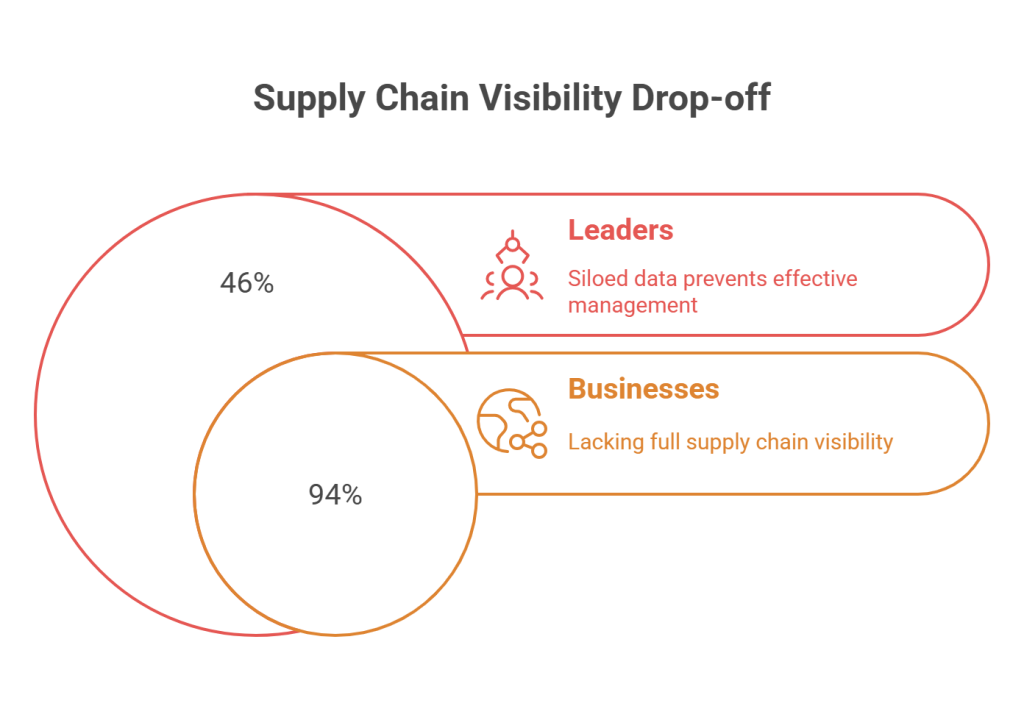
Knowing the real-time status of transactions has become a critical competitive advantage. Businesses can no longer afford to wait for batch processing cycles to complete when decisions must be made in seconds, and supply chain disruptions can trigger far-reaching consequences.
Real-Time Transaction Visibility Overview
Real-time visibility means having up-to-the-minute insight into orders, shipments, inventory levels, and other critical business data. This capability enables businesses to track the progress of documents such as purchase orders, invoices, and shipping notifications as they move through various systems and between trading partners.
The demand for this immediacy has grown substantially because traditional EDI approaches often lack the responsiveness required in modern business environments. Real-time monitoring capabilities allow organizations to identify issues as they arise rather than discovering problems after they’ve already impacted operations.
Furthermore, this visibility extends beyond internal systems to create end-to-end views from internal applications to the full B2B ecosystem, empowering both technical and business users with total visibility into transactions.
How Commport Implements Real-Time Transaction Visibility
Commport’s integrated EDI solution includes several key components that enable genuine real-time transaction visibility:
Comprehensive Dashboards and Analytics – Commport provides detailed dashboards that track every document’s journey from transmission to acknowledgment, showing document status, confirmations, and acknowledgments in real time.
Proactive Alert System – The platform features automation-driven reporting that quickly detects errors, failed transactions, or SLA breaches, with configurable alerts for failed transmissions or delayed acknowledgments.
End-to-End Transaction Tracking – Users gain visibility into the entire EDI lifecycle, allowing them to monitor multi-enterprise business processes in real time.
Mobile Accessibility – Dynamic web dashboards are optimized for mobile devices, ensuring access to critical information from anywhere at any time.
Benefits of Real-Time Transaction Visibility
Implementing real-time transaction visibility through Commport’s integrated EDI solution delivers several significant advantages:
- Faster Decision-Making – With immediate access to transaction data, businesses can make informed decisions promptly and respond quickly to changing customer and market demands.
- Proactive Problem Resolution – Real-time alerts enable teams to detect disruptions, late shipments, incorrect pricing, or inventory shortages before they impact end customers.
- Enhanced Customer Service – The ability to provide immediate updates on order status allows for proactive communication and faster issue resolution, improving overall customer satisfaction.
- Improved Supply Chain Transparency – All trading partners gain access to the same real-time data, promoting better collaboration and faster issue resolution across the supply chain.
- Optimized Inventory Management – Real-time updates to inventory levels across multiple systems prevent overstocking, stockouts, and unnecessary manual stock adjustments.
- Increased Security – Immediate insights into potential security breaches or suspicious activities allow for swift responses to mitigate risks.
Throughout the transaction lifecycle, this visibility transforms how businesses operate, shifting from reactive to proactive management and ultimately enabling a demand-driven rather than supply-driven business model.
4. ERP System Integration

For successful business operations, connecting your ERP (Enterprise Resource Planning) system with other crucial applications remains a fundamental requirement. According to studies, 88% of businesses using EDI solutions likewise utilize ERP systems, making integration between these platforms increasingly vital for operational success.
ERP System Integration Overview
ERP systems serve as the central nervous system for modern businesses, managing core processes including finance, procurement, production, and customer relationship management. These comprehensive platforms streamline operations by creating a unified data environment across departments.
Yet, ERP systems primarily focus on internal operations, whereas EDI concentrates on external communication with trading partners. Without proper integration between these systems, businesses face a critical disconnect—internal data remains isolated from external transactions, creating inefficient data silos that require manual intervention.
The core challenge lies in connecting these fundamentally different systems. ERP platforms use their own unique data formats and structures, whereas EDI employs specialized standards like EDIFACT, TRADACOMS, and PEPPOL. Creating a seamless bridge between these disparate systems forms the foundation of truly integrated EDI solutions.
How Commport Implements ERP System Integration
Commport’s fully integrated EDI system offers comprehensive integration capabilities specifically designed for major ERP platforms. Their solution creates a direct connection between front-end EDI and back-end ERP systems, establishing seamless data flows between internal operations and external trading partners.
Commport’s approach includes:
- Direct Connectivity: Their solution integrates smoothly with major ERP systems, including SAP, Oracle NetSuite, and Microsoft Dynamics, eliminating compatibility concerns.
- Automated Data Pipeline: Commport establishes automated workflows between EDI and ERP, enabling instant updates across systems whenever new information arrives.
- Enhanced Mapping Capabilities: Their system provides sophisticated translation functionality that converts EDI documents into ERP-compatible formats and vice versa.
- Comprehensive Support: With over three decades of industry experience, Commport offers expert assistance throughout the implementation process and ongoing maintenance.
Looking to implement a comprehensive EDI solution with seamless ERP integration? Commport Integrated EDI Solution is the #1 Top Rated EDI Solution in North America, With Built-in VAN, Easy Integration with All Major ERPs and Backend Office Systems, and Scalable for businesses of any size.
Benefits of ERP System Integration
The integration of ERP systems with EDI through Commport’s integrated EDI workflows delivers substantial advantages:
Elimination of Manual Processes: Integrated systems automate document processing from creation to delivery, removing error-prone manual data entry that typically slows operations and increases costs.
Enhanced Data Accuracy: By creating a direct pipeline between EDI and ERP, integration eliminates redundant data entry, dramatically reducing errors and ensuring data consistency across systems.
Accelerated Business Cycles: Orders received through EDI instantly appear in ERP systems, reducing processing times and enabling faster order-to-cash cycles.
Single Source of Truth: Integration creates unified visibility across internal and external data, enabling companies to analyze EDI data alongside other enterprise information using their ERP’s analytical capabilities.
Improved Cash Flow: Through reduced errors, faster transaction processing, and optimized resource allocation, properly integrated EDI-ERP systems directly enhance overall financial performance.
Supply Chain Optimization: Integration enables businesses to incorporate supply-chain data like inventory levels and sales projections directly into EDI processes, facilitating responsive just-in-time management.
5. Error Reduction and Data Accuracy
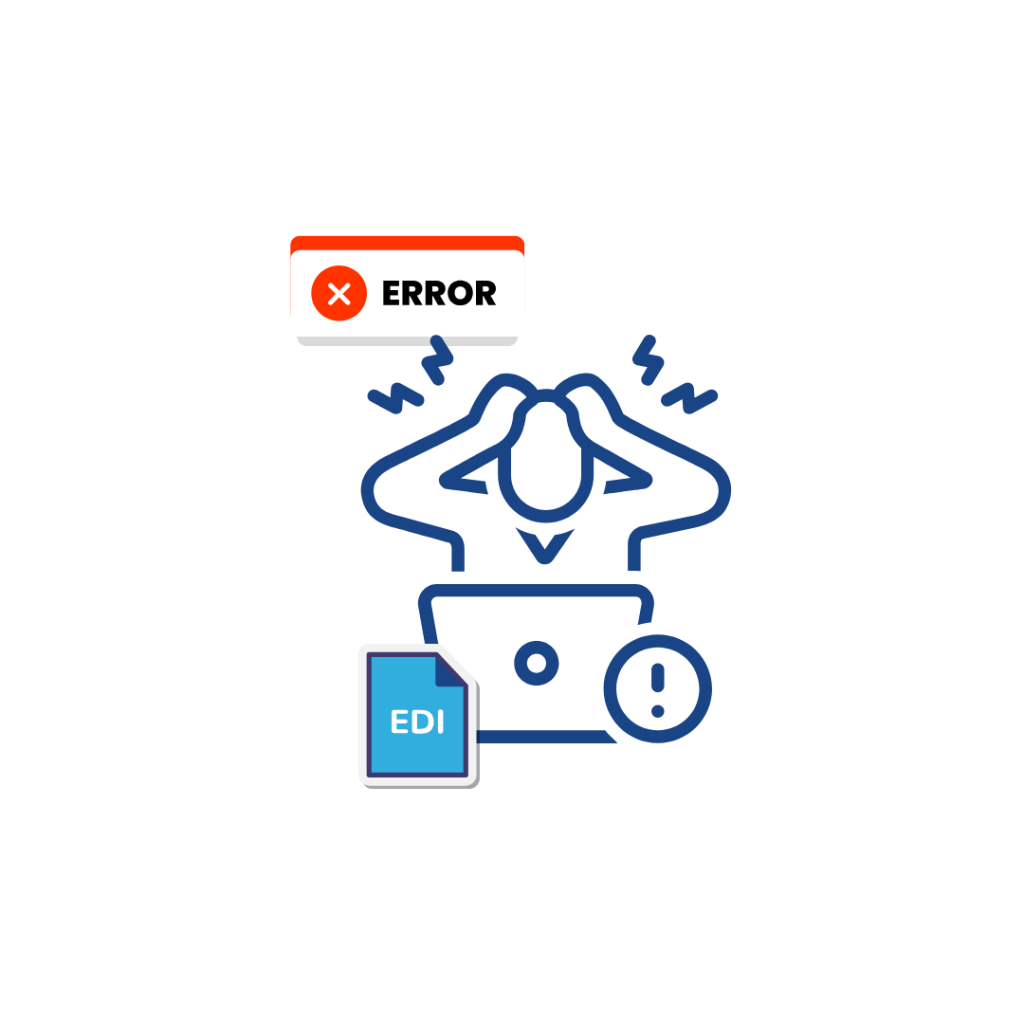
EDI errors silently drain business resources while disrupting critical supply chain operations. Studies indicate that approximately 5% of all manually entered invoice data contains typing errors, creating a cascade of problems throughout the business ecosystem.
Error Reduction and Data Accuracy Overview
Human errors in manual data entry represent just the beginning of potential EDI problems. Beyond simple typing mistakes, businesses face multiple error categories, including syntax errors (improper formatting), semantic errors (conflicting information), and content errors (missing or incorrect data). Indeed, these issues quickly escalate; each EDI dispute typically requires approximately 2 hours to resolve, with 5-25% of inbound orders experiencing problems that impact downstream operations.
The financial impact extends beyond immediate costs. Without proper error prevention, companies face operational inefficiencies, including wrong items being delivered or orders never reaching warehouses. Furthermore, real-time monitoring—rated important by 88% of EDI users—remains absent in many systems, leaving businesses operating blindly until problems escalate.
How Commport Ensures Data Accuracy
Commport’s fully integrated EDI system implements multiple layers of error prevention:
- Automated Validation Protocols – Their system performs comprehensive checks that verify data accuracy across related fields, eliminating the possibility of conflicting or invalid information.
- Real-Time Monitoring – Unlike basic EDI systems, Commport provides end-to-end visibility with proactive alerts that detect anomalies instantly, preventing minor issues from becoming major disruptions.
- Structured Testing – Commport conducts thorough onboarding with comprehensive testing of all message variants, ensuring smooth operations from day one.
- Intelligent Error Handling – Their system implements robust mechanisms that detect and address issues in real-time, often resolving problems before users even notice them.
- AI-Enhanced Detection – Advanced machine learning algorithms monitor transaction flows, spotting anomalies such as missing segments or inconsistent totals.
Benefits of Error-Free Data Exchange
Organizations implementing Commport’s integrated EDI workflows experience substantial improvements:
First, integrated EDI eliminates the need for re-keying information, ensuring data remains accurate and consistent throughout all transactions. This accuracy prevents misunderstandings and disputes with trading partners, contributing to smoother business operations.
Second, by removing manual processes, businesses gain both time and cost savings alongside improved customer experience. The higher accuracy rates enhance the reliability of business data, customer confidence, and stakeholder decision-making.
Third, Commport’s integrated EDI solution flags any errors before they impact business operations, allowing preemptive correction rather than expensive remediation. This proactive approach transforms electronic data interchange from a source of constant problems into a competitive advantage.
Finally, with standardized formats and validation rules, Commport ensures consistent data integrity, establishing a foundation for growth unhampered by information quality issues.
6. Cost Efficiency and Paperless Operations

Businesses adopting integrated EDI solutions experience substantial cost savings across multiple operational areas. Manual data processing drains both time and financial resources, ultimately affecting a company’s bottom line and competitive position.
Cost Efficiency Overview
Implementation of EDI solutions can reduce transaction costs by over 35% and decrease errors by approximately 30%. The financial impact becomes even more significant when examining specific operational areas. For instance, transmitting payments and invoices electronically through integrated EDI workflows can reduce financial transaction costs by up to 90%, resulting in average yearly savings of USD 117,000.
Furthermore, manual data entry typically increases operational expenses by 20-30%, plus an additional 20% in chargebacks due to processing errors. This burden becomes particularly evident considering that corporations in the US spend more than USD 120 billion yearly on printed forms alone, most of which become obsolete within three months.
How Commport Reduces Operational Costs
Commport’s fully integrated EDI system tackles these financial drains through several mechanisms. Primarily, their solution eliminates costs associated with paper-based processes, including printing, postage, and manual document handling.
Subsequently, by automating data exchange, Commport reduces processing time while enhancing accuracy. Their integrated EDI solution streamlines order processing, which can reduce order-to-shipment time by up to 50%. This efficiency boost minimizes staffing requirements—typically, with integrated EDI services, a single person can handle purchasing and related tasks that previously required multiple employees.
Additionally, Commport’s system helps prevent costly chargebacks from trading partners. These fees, often imposed for errors like late shipments or partial deliveries, decrease significantly as automated data validation reduces entry errors.
Benefits of Going Paperless
Beyond direct cost savings, transitioning to paperless operations through Commport’s integrated EDI solutions delivers several advantages:
- Time Efficiency: Office workers typically spend 30-40% of their time searching for documents in physical file cabinets. Digital documents eliminate this waste, allowing employees to focus on revenue-generating activities.
- Space Optimization: Eliminating physical document storage frees valuable office space that would otherwise house filing cabinets and paper archives.
- Security Enhancement: Digital documents allow for granular access controls, protecting sensitive information while providing complete audit trails.
- Environmental Impact: Reduction in paper usage directly contributes to environmental sustainability by decreasing waste and resource consumption.
Hence, Commport’s integrated EDI solution not only reduces direct operational costs but also creates value through improved productivity, accelerated cash flow, and enhanced business relationships.
7. Scalability for Growing Businesses

As your company expands, your EDI infrastructure must evolve accordingly. Without scalability, businesses face significant challenges when transaction volumes increase or new trading partners need onboarding—potentially creating bottlenecks that hinder growth.
Scalability Overview
Scalability in EDI refers to a system’s ability to handle increased transaction volumes without performance degradation. A truly scalable EDI solution supports business growth by enabling efficient processing of rising transaction demands while maintaining operational efficiency.
Throughout the industry, cloud-based EDI has become the standard approach, replacing traditional on-premises systems that require substantial infrastructure investments. This shift reflects businesses’ growing need for flexibility as they expand operations into new markets or onboard additional trading partners.
In practice, scalability extends beyond merely handling higher transaction volumes—it encompasses adding new connections and document types without re-engineering the entire system, keeping operations agile and future-ready.
How Commport Supports Business Growth
Commport’s fully integrated EDI system offers several key features that facilitate business growth:
- Cloud-Based Architecture: Their solution eliminates hardware constraints, allowing seamless expansion as your business grows
- Flexible Pricing Model: Subscription-based pricing where businesses pay for actual usage rather than expensive infrastructure
- Rapid Partner Onboarding: Pre-built integrations and automated mapping tools enable new trading partner connections within days instead of weeks
- Modular Design: Interconnected modules that can be independently scaled according to specific business needs
Looking for a solution that grows with your business? Commport Integrated EDI Solution is the #1 Top Rated EDI Solution in North America, With Built-in VAN, Easy Integration with All Major ERPs and Backend Office Systems and Scalable.
Benefits of a Scalable EDI System
Implementing Commport’s integrated EDI solution delivers substantial scalability advantages:
Primarily, it accommodates growth seamlessly—whether expanding into new markets, adding trading partners, or experiencing transaction volume surges. Meanwhile, its adaptability ensures compatibility across diverse trading relationships regardless of their preferred EDI standards.
Additionally, cloud-based deployment eliminates downtime during growth phases, maintaining continuous operations during expansion. The solution simultaneously supports international business by providing accessibility from anywhere, enabling global operations management.
Naturally, this flexibility translates to financial benefits through pay-as-you-grow pricing, allowing organizations to add capacity without major capital expenditures.
8. Compliance with Industry Standards

Regulatory requirements make EDI compliance a necessity rather than an option for businesses exchanging electronic documents. EDI compliance refers to a company’s ability to accurately send and receive transactions according to specific standards and trading partner requirements.
Compliance Overview
EDI compliance involves adhering to established standards that dictate how data is formatted and exchanged between trading partners. Primary global standards that Commport supports include:
- ANSI X12: Predominantly used in North America across retail, healthcare, and transportation sectors
- EDIFACT: Used internationally, especially in Europe, facilitating global trade
- TRADACOMS: Primarily implemented in UK retail sectors
Notably, industries like healthcare have additional regulations, such as HIPAA, that mandate specific EDI standards for health information. Non-compliance with these standards typically results in chargebacks—financial penalties ranging from hundreds to thousands of dollars per violation.
How Commport Ensures EDI Compliance
Commport’s fully integrated EDI system guarantees compliance through several mechanisms:
Primarily, their solution provides continuous monitoring with compliance checks to ensure transactions meet global standards. The system automatically validates data against trading partner requirements, flagging potential issues before documents are transmitted.
Although requirements can change at any time, Commport makes necessary adjustments, such as EDI mapping on behalf of clients, allowing businesses to maintain operations without disruption.
Benefits of Regulatory Compliance
Implementing Commport’s integrated EDI services yields substantial compliance advantages:
First, it helps businesses avoid costly chargebacks by ensuring adherence to trading partner specifications. Yet beyond avoiding penalties, compliant integrated EDI workflows facilitate accurate and auditable data exchange.
Thus, businesses using Commport’s solution build trust-based relationships with trading partners, fostering confidence and business growth. Undeniably, the streamlined compliance process transforms a potentially complex regulatory burden into a competitive advantage.
9. Global Communication Capabilities
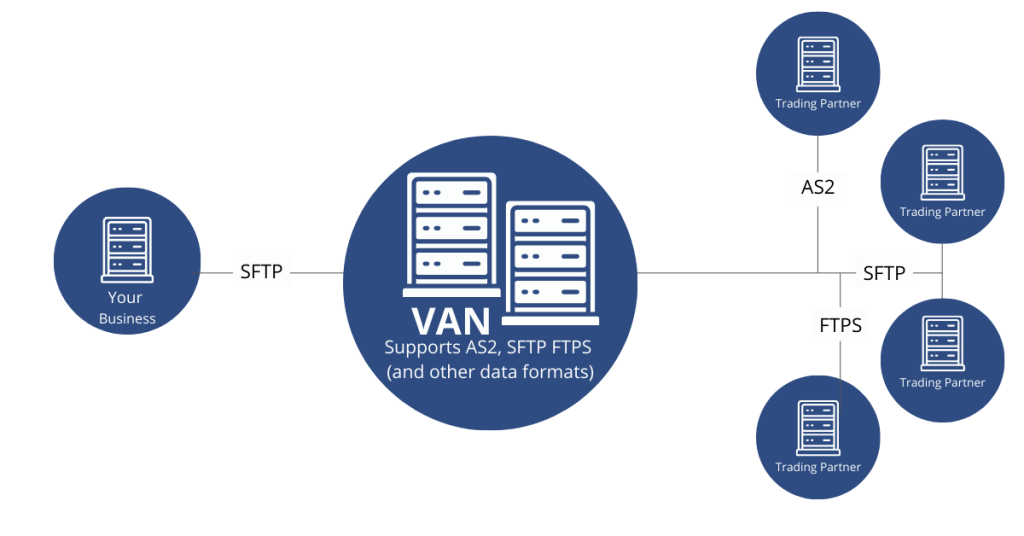
In an increasingly interconnected marketplace, the ability to manage cross-border transactions has become critical for businesses of all sizes. Successful international trade demands EDI solutions capable of overcoming unique global challenges that domestic operations rarely encounter.
Global Communication Overview
Cross-border EDI transactions introduce complex challenges beyond standard domestic implementations. These include navigating different regulations governing electronic transactions, harmonizing data formats across borders, overcoming language barriers, managing time zone differences, handling multiple currencies, and ensuring data security compliance with international standards. Without proper solutions, these obstacles can severely hamper global business expansion and create costly operational inefficiencies.
How Commport Supports International EDI
Commport’s fully integrated EDI system specifically addresses international communication needs through several key capabilities:
Multilingual Support: The platform enables seamless communication regardless of language differences, breaking down one of the primary barriers to international trade.
Global Standards Compliance: Commport supports diverse EDI standards, including EDIFACT, which facilitates global trade by providing a standardized format for cross-border transactions.
Interconnected Communication Networks: Their Value Added Network (VAN) creates a single communication link connecting diverse organizations both nationally and internationally.
Benefits of Cross-Border EDI Integration
Businesses implementing Commport’s integrated EDI services for global operations experience substantial advantages:
Simplified Cross-Border Transactions: The system provides a common language for business transactions regardless of geographic location, eliminating communication barriers.
Enhanced Trading Partner Relationships: With reliable data transfer processes, companies build stronger connections with international partners.
Expanded Market Reach: The integrated EDI workflows facilitate engagement with global trading partners, opening new revenue opportunities that would otherwise remain inaccessible.
10. Customizable and Flexible Workflows
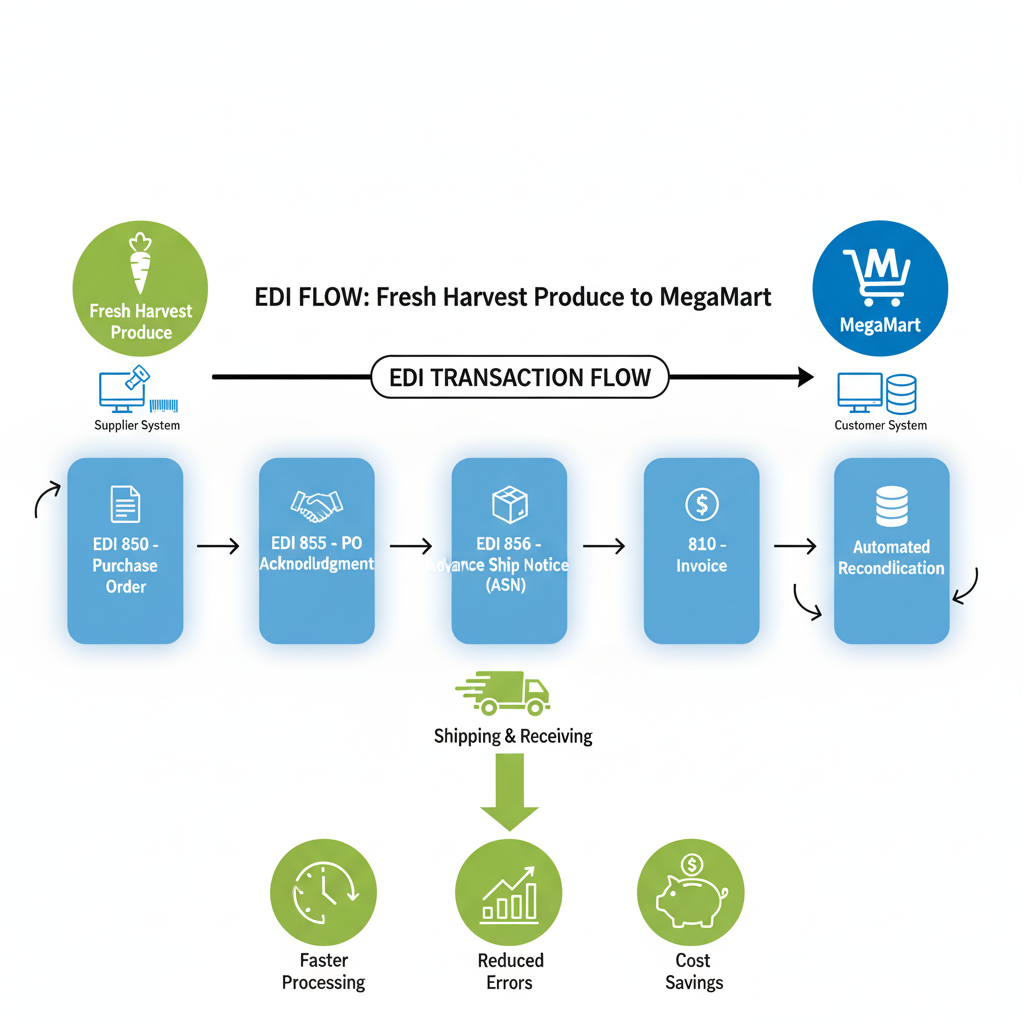
Businesses struggle with rigid systems that can’t adapt to their unique operational needs. Customizable workflows address this challenge by enabling tailored electronic document exchanges.
Customizable Workflows Overview
Every business operates differently—even within the same industry. Modern EDI solutions must therefore offer the flexibility to customize and adapt workflows to unique business processes. This adaptability allows organizations to configure document processing sequences, approval hierarchies, and notification protocols according to their specific requirements.
How Commport Enables Integrated EDI Workflows
Commport’s fully integrated EDI system facilitates workflow customization through several mechanisms:
First, their solution utilizes sophisticated rules engines that determine how workflows progress based on received EDI data. Additionally, Commport implements triggers that initiate specific processes when predetermined conditions are met.
The platform further incorporates automated actions—tasks executed without human intervention, yet still customizable to match company protocols.
Benefits of Workflow Flexibility
Customizable workflows deliver numerous advantages. Primarily, they accommodate new trading partners and higher order volumes without additional costs. Unlike traditional systems requiring all parties to use compatible technology, Commport’s integrated EDI solutions process diverse document formats.
Beyond technical benefits, customizable workflows allow organizations to grow without constraints—adapting to new requirements as businesses evolve. This adaptability creates efficiencies by aligning electronic processes with established operational practices rather than forcing companies to modify their procedures.
Conclusion
Throughout this blog, we’ve explored how Commport’s Integrated EDI solution transforms business operations through ten powerful features. Standardized document formats establish a foundation for error-free communication, while automated data exchange eliminates the tedious manual processes that typically increase operational costs by 20-30%. Real-time transaction visibility shifts businesses from reactive to proactive management, enabling faster decision-making when every second counts.
ERP system integration creates that essential bridge between internal operations and external trading partners, therefore establishing a seamless flow of accurate data across your entire business ecosystem. This accuracy, coupled with robust error reduction mechanisms, prevents costly chargebacks and builds stronger relationships with trading partners.
Paperless operations deliver substantial cost savings, up to 35% reduction in transaction costs, and 30% fewer errors. Additionally, the cloud-based architecture ensures your EDI solution grows alongside your business, accommodating new partners and increased transaction volumes without performance degradation.
Compliance features safeguard your business against regulatory penalties while global communication capabilities break down geographical barriers, opening doors to new markets regardless of language or location. Customizable workflows adapt to your specific business processes rather than forcing your operations to conform to rigid systems.
Get Onboarded in Days, Not Weeks or Months with Commport’s streamlined implementation process that minimizes disruption while maximizing your return on investment.
After examining these ten powerful features, Commport’s integrated EDI solution clearly stands as more than just technology—it represents a strategic asset that transforms document exchange from a necessary business function into a competitive advantage. Companies seeking to eliminate manual data entry, reduce errors, cut operational costs, and scale efficiently will find Commport’s solution addresses these challenges while providing the flexibility needed for long-term success.
Commport's Integrated EDI Solution
Need Help? Download: Commport's EDI Buyers Guide
Unlock the full potential of your supply chain with our comprehensive EDI Buyer's Guide — your first step towards seamless, efficient, and error-free transactions
Frequently Asked Questions
Commport’s Integrated EDI solution offers standardized document formats, automated data exchange, real-time transaction visibility, ERP system integration, and error reduction capabilities. It also provides cost-efficient paperless operations, scalability for growing businesses, compliance with industry standards, global communication capabilities, and customizable workflows.
Commport’s solution eliminates costs associated with paper-based processes, automates data exchange to reduce processing time, and enhances accuracy. It can reduce transaction costs by over 35% and decrease errors by approximately 30%, resulting in significant savings on printing, postage, and manual document handling.
Yes, Commport’s fully integrated EDI system offers comprehensive integration capabilities specifically designed for major ERP platforms. It creates a direct connection between front-end EDI and back-end ERP systems, establishing seamless data flows between internal operations and external trading partners.
Commport’s solution provides continuous monitoring with compliance checks to ensure transactions meet global standards like ANSI X12, EDIFACT, and TRADACOMS. The system automatically validates data against trading partner requirements, flagging potential issues before documents are transmitted and making necessary adjustments to maintain compliance.
Yes, Commport’s EDI solution offers scalability through its cloud-based architecture, which eliminates hardware constraints and allows seamless expansion. It features a flexible pricing model, rapid partner onboarding capabilities, and a modular design that can be independently scaled according to specific business needs.

